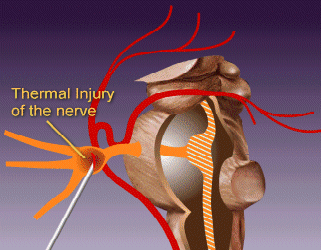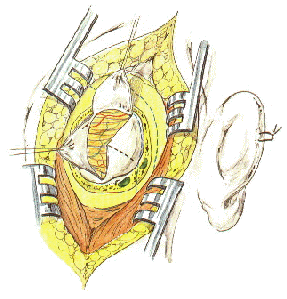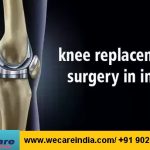MICROVASCULAR DECOMPRESSION IN INDIA

What is microvascular decompression (MVD) ?
MVD is a surgical procedure to relieve the symptoms (pain, muscle twitching) caused by compression of a nerve by an artery or vein. MVD involves surgically opening the skull (craniotomy) and exposing the nerve at the base of the brainstem to insert a tiny sponge between the compressing vessel and the nerve. This sponge isolates the nerve from the pulsating effect and pressure of the blood vessel.
Trigeminal neuralgia is an irritation of the fifth cranial nerve causing severe pain that usually affects one side of the face, normally in the forehead, cheek, jaw, or teeth . To treat trigeminal neuralgia, a sponge is placed between the trigeminal nerve and the superior cerebellar artery or a branch of the petrosal vein. By removing the compression, the painful symptoms are relieved.
Microvascular decompression, though the most invasive of all trigeminal neuralgia surgeries, as it is an open surgery that needs opening through the skull via a craniotomy, though it is also the most effective surgery for pain relief. The first step of this trigeminal neuralgia surgery involves the microsurgical exposure of the root of the trigeminal nerve. Then the blood vessel that may be causing pressure on the nerve is identified, after which the blood vessel is lightly displaced from the point of compression, similar to the method employed to bring about relief in spinal decompression. On most occasions, this decompression aids in reducing the sensitivity of the nerve, thus, helping the nerve to return to normalcy. However, there are many trigeminal neuralgia surgery risks involved with this invasive surgical procedure, like decreased hearing, facial weakness, facial numbness etc.
The aim of MVD surgery is to alleviate neurovascular compression upon the trigeminal nerve root. This permits the trigeminal nerve nucleus to recover from its state of hyperactivity and return to a normal, pain free condition. Micro-instruments are used to mobilize the offending vessels away from the trigeminal nerve root. The decompression is permanently maintained by inert implants, such as those made of shredded Teflon® felt, between the offending vessels and nerve.

What happens before surgery ?
You will typically undergo tests (e.g., blood test, electrocardiogram, chest X-ray) several days before surgery. In the doctors office you will sign consent forms and complete paperwork to inform the surgeon about your medical history (i.e., allergies, medicines, anesthesia reactions, previous surgeries). Discontinue all non-steroidal anti-inflammatory medicines (Naproxin, Advil, etc.) and blood thinners (coumadin, aspirin, etc.) 1 week before surgery. Additionally, stop smoking and chewing tobacco before and after surgery because these activities can cause bleeding problems. Wash your hair with Hibiclens® (chlorhexidine) antiseptic soap for 3 consecutive days prior to surgery. No food or drink is permitted past midnight the night before surgery.
What happens during surgery ?
Patients are admitted to the hospital the morning of the procedure. You will meet with a nurse who will ask your name, date of birth, what procedure you’re having, and the side of your facial pain. They will explain the pre-op process and discuss any questions you may have. An anesthesiologist will meet with you and explain the effects of anesthesia and its risks. They will place an intravenous (IV) line in your arm and then transport you to the operating room.







